BACK TO finalistS
Finalist: Architectural Category
AT THE TERRACE'S EDGE
At the Terrace’s Edge – Bridging Generations A Modular Hostel Tower in A Suburban Town of Hong Kong Introduction The project aims to bridge connections between elderly villagers and overseas backpackers, to be able to experience an exchange of cultures and to enhance social connections within the site. Fueled by the issue of social isolation […]

At the Terrace’s Edge – Bridging Generations
A Modular Hostel Tower in A Suburban Town of Hong Kong
Introduction
The project aims to bridge connections between elderly villagers and overseas backpackers, to be able to experience an exchange of cultures and to enhance social connections within the site. Fueled by the issue of social isolation and disconnect of elderly in Hong Kong, this Modular Hostel Tower serves as a space for enlightening cultural interactions to take place by exposing backpackers to traditional Hong Kong culture first hand through the long-time residents of the neighbouring village in the site.
Current Situation
Since the COVID -19 outbreak, elderly isolation has worsened due to the disruption in elderly services, such as community centres and workshops, calling for swifter actions to address the impact of social disconnect and the mental health of elderly.
The site itself is located in between two social contexts of Tuen Mun San Hui - “the new market” - which then serves as the intersection point between modern developments and a traditional village: “Leung Tin Tsuen” , which is the village of focus within this context. The living conditions of these traditional Hong Kong village houses are often multi-generational, consisting of children, adults and grandparents. The question is then raised of how the elderly generation would respond during their absence due to school, work or other social events.
Building Response
In this way, At the Terrace’s Edge project responds to the issue of social isolation with opportunities for the elderly to connect with younger generations of different backgrounds; by using the skills they have already harboured of their years of experience and sharing them in welcoming and interactive spaces. Traditional Hong Kong activities such as calligraphy, ink painting, checkers being played or done by the elderly help to promote Hong Kong culture to overseas young backpackers.
Missing Concept
The form is a spatial metaphor for a complex relationship between two generations: a young child and his aging grandparent. The form depicts a young child stepping forward into the world of his grandparent, offering care, attention and presence, while simultaneously growing up, becoming independent and having new experiences ahead of him. The massing is articulated into two primary volumes that represent the two generations.
The larger, grounded volume (northern block) symbolizes the grandparent—rooted, enduring, weathered by time. It is composed of solid, wooden textured materials that evoke permanence, memory, and wisdom. Furthermore, these wooden textures emphasize the warmth and caring nature of a loving grandparent.
The lighter, outreaching volume represents the young man, reflecting contemporary life and future aspirations. The materiality is also bare concrete, symbolizing a blank slate compared to the grounded wooden mass.
Together these two masses intersect and overlap, reflecting the brief and meaningful periods of reconnection. These intersections become shared communal spaces, mirroring the need for social connect and the precious relationships between different generations, emphasizing the importance of unity, togetherness and continuity.


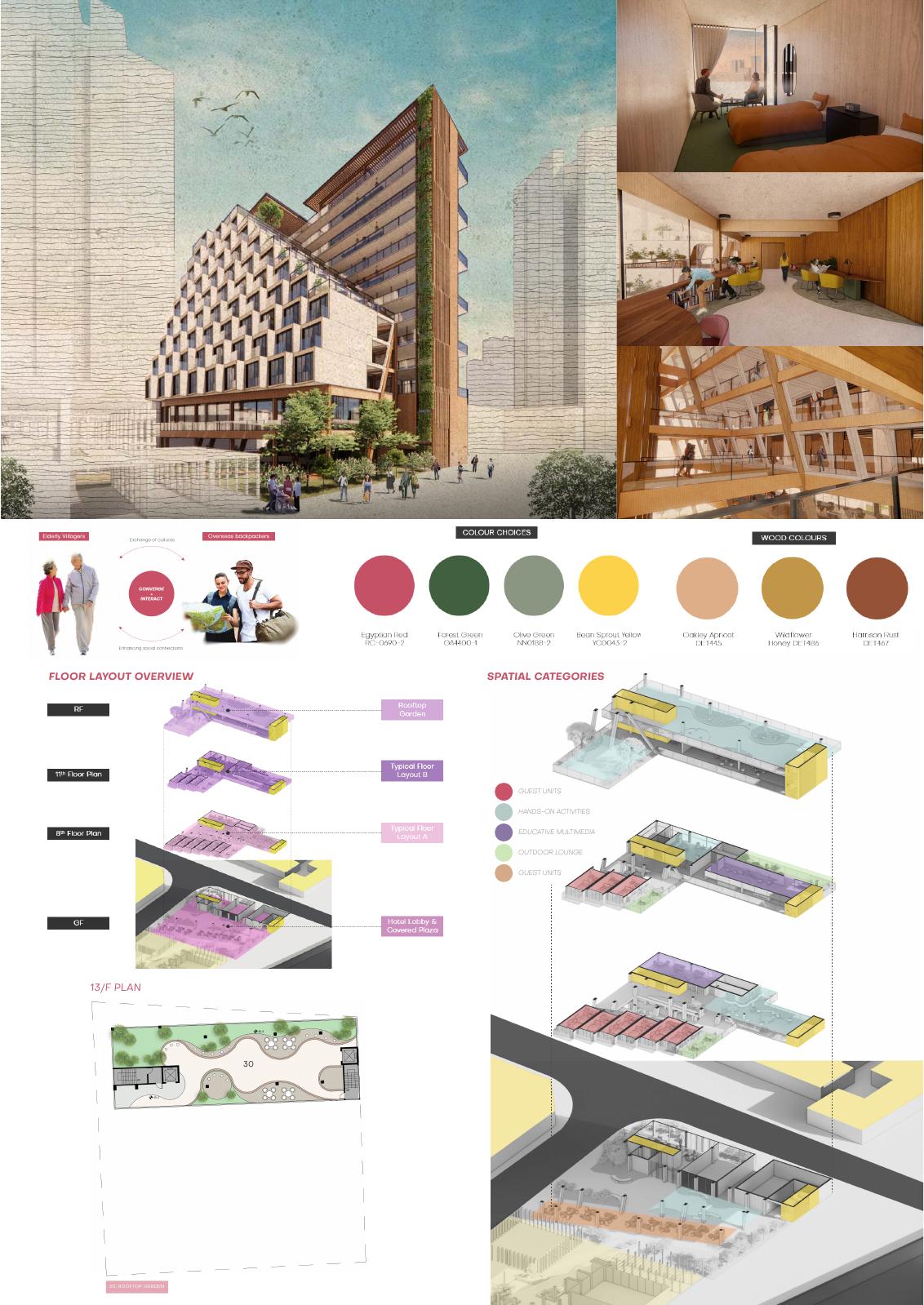
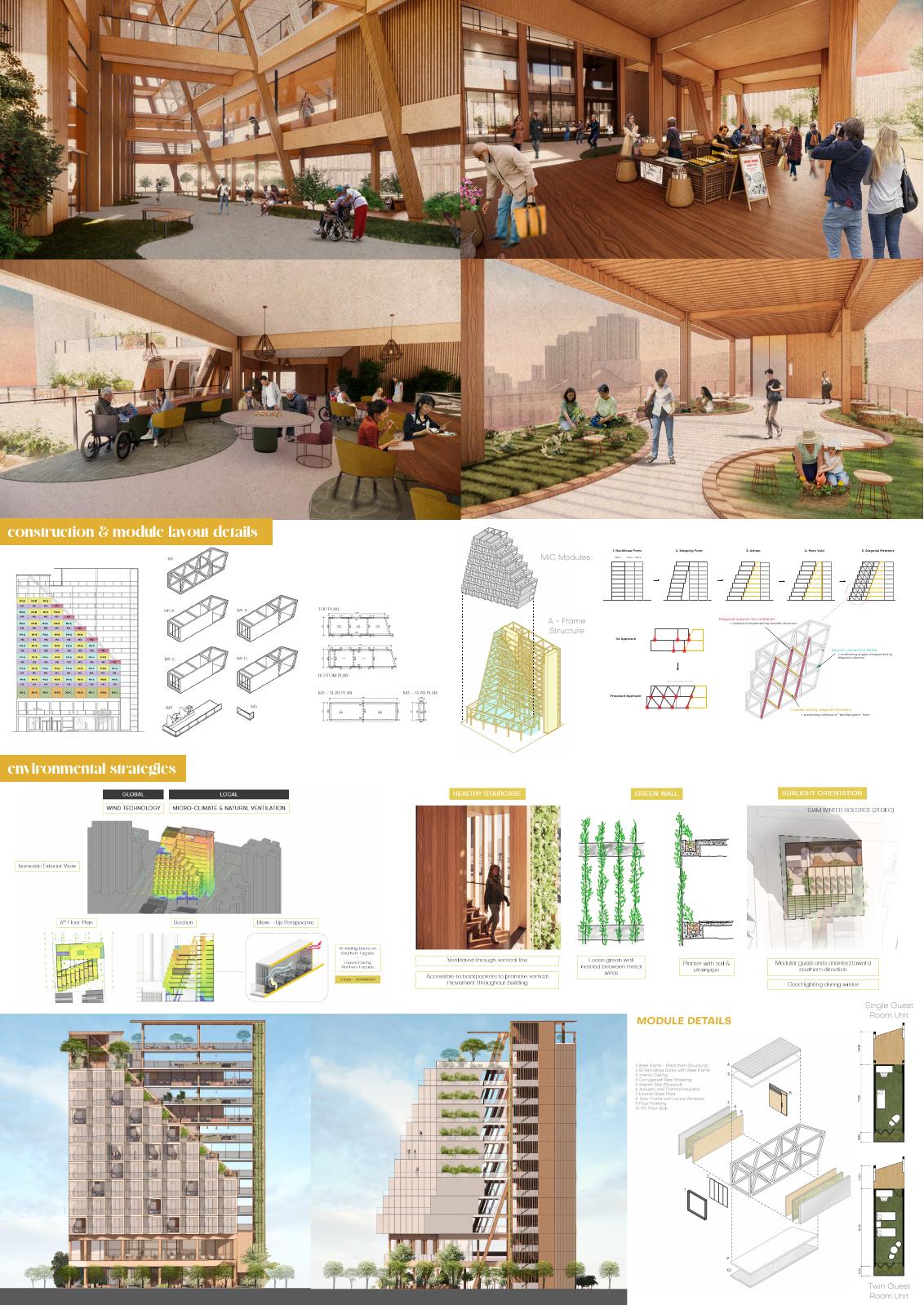
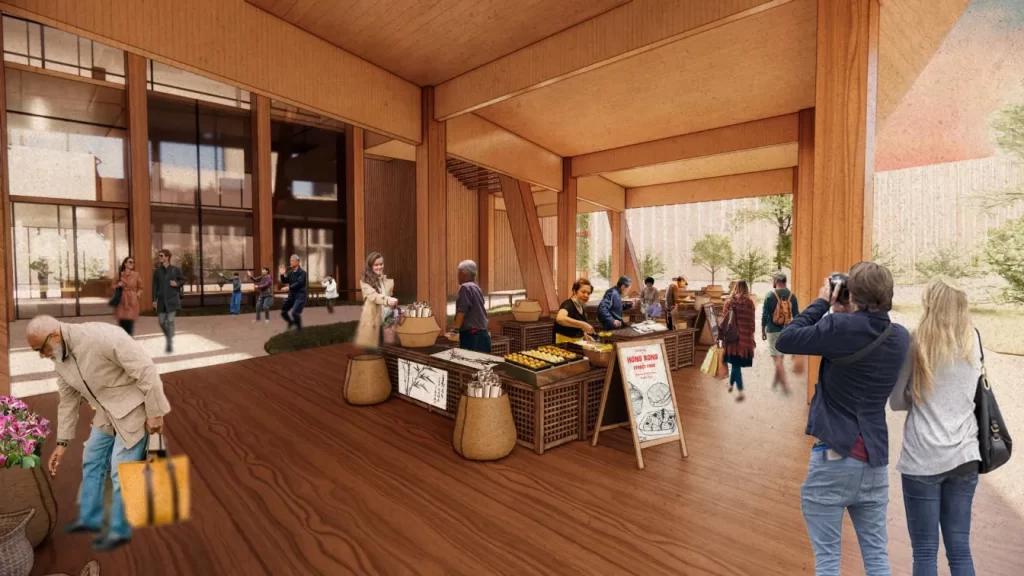
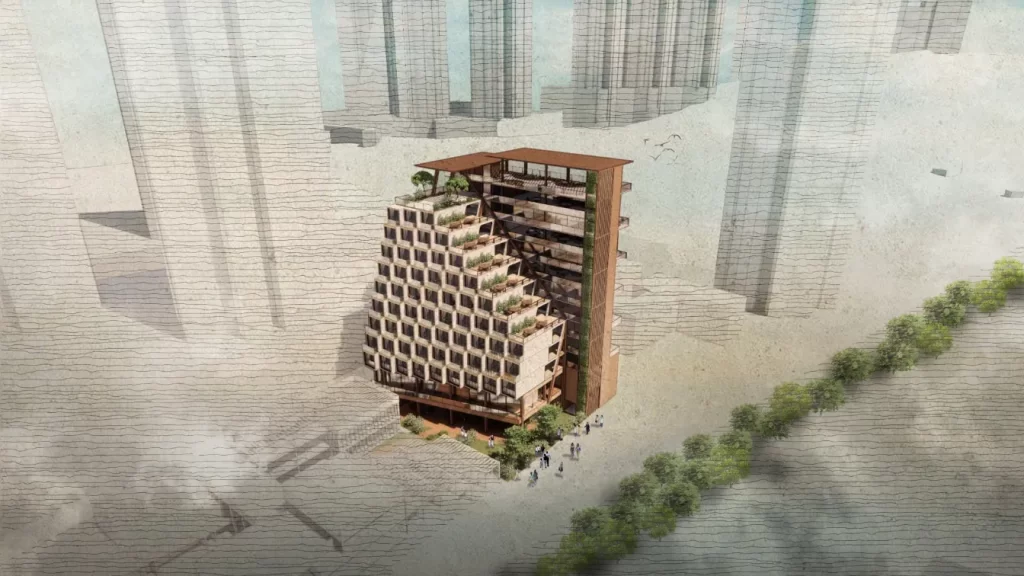
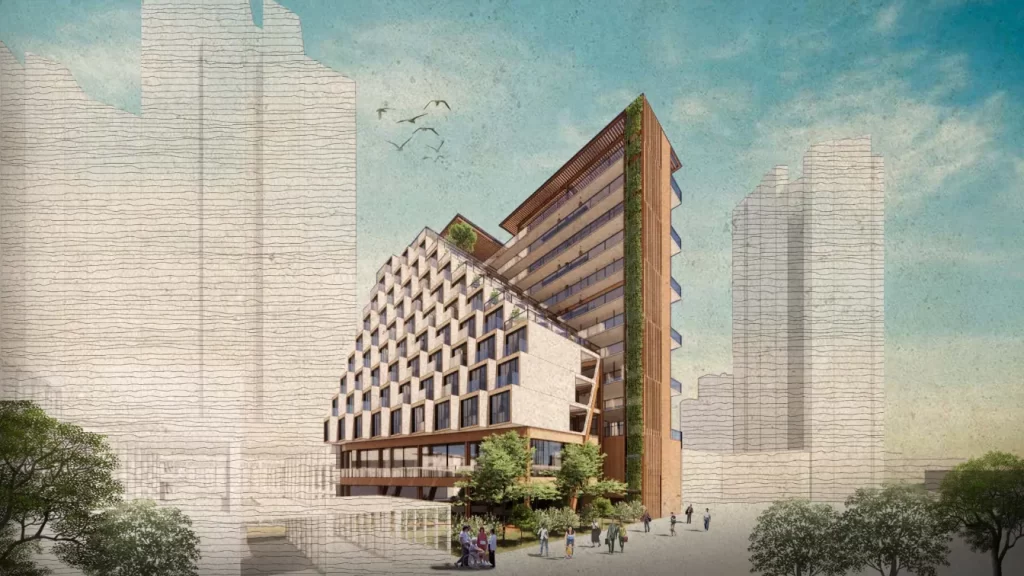
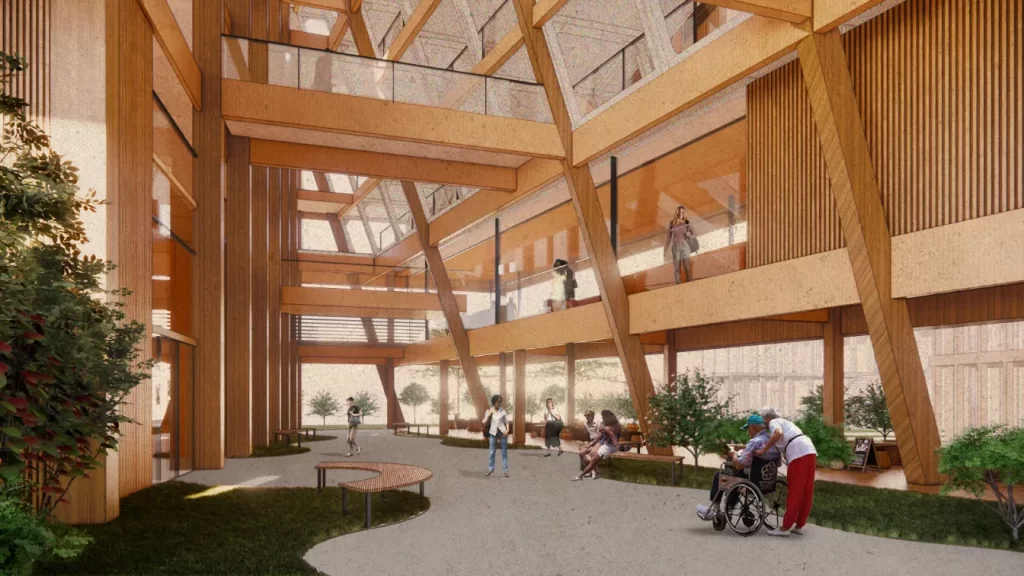
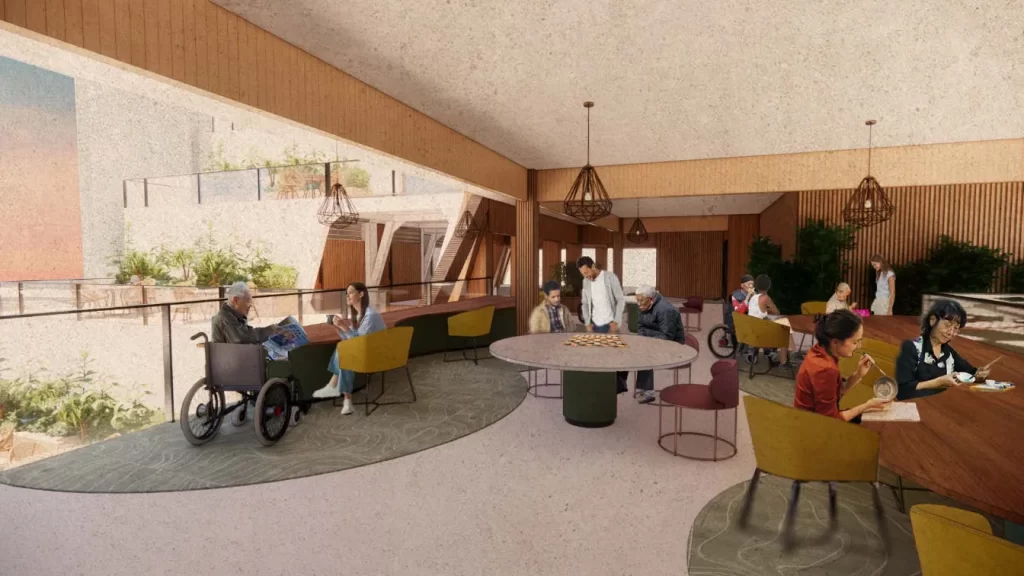
Showcase your design to an international audience
SUBMIT NOW
Image: Agrapolis Urban Permaculture Farm by David Johanes Palar
Top
At the Terrace’s Edge – Bridging Generations A Modular Hostel Tower in A Suburban Town of Hong Kong Introduction The project aims to bridge connections between elderly villagers and overseas backpackers, to be able to experience an exchange of cultures and to enhance social connections within the site. Fueled by the issue of social isolation and disconnect of elderly in Hong Kong, this Modular Hostel Tower serves as a space for enlightening cultural interactions to take place by exposing backpackers to traditional Hong Kong culture first hand through the long-time residents of the neighbouring village in the site. Current Situation Since the COVID -19 outbreak, elderly isolation has worsened due to the disruption in elderly services, such as community centres and workshops, calling for swifter actions to address the impact of social disconnect and the mental health of elderly. The site itself is located in between two social contexts of Tuen Mun San Hui - “the new market” - which then serves as the intersection point between modern developments and a traditional village: “Leung Tin Tsuen” , which is the village of focus within this context. The living conditions of these traditional Hong Kong village houses are often multi-generational, consisting of children, adults and grandparents. The question is then raised of how the elderly generation would respond during their absence due to school, work or other social events. Building Response In this way, At the Terrace’s Edge project responds to the issue of social isolation with opportunities for the elderly to connect with younger generations of different backgrounds; by using the skills they have already harboured of their years of experience and sharing them in welcoming and interactive spaces. Traditional Hong Kong activities such as calligraphy, ink painting, checkers being played or done by the elderly help to promote Hong Kong culture to overseas young backpackers. Missing Concept The form is a spatial metaphor for a complex relationship between two generations: a young child and his aging grandparent. The form depicts a young child stepping forward into the world of his grandparent, offering care, attention and presence, while simultaneously growing up, becoming independent and having new experiences ahead of him. The massing is articulated into two primary volumes that represent the two generations. The larger, grounded volume (northern block) symbolizes the grandparent—rooted, enduring, weathered by time. It is composed of solid, wooden textured materials that evoke permanence, memory, and wisdom. Furthermore, these wooden textures emphasize the warmth and caring nature of a loving grandparent. The lighter, outreaching volume represents the young man, reflecting contemporary life and future aspirations. The materiality is also bare concrete, symbolizing a blank slate compared to the grounded wooden mass. Together these two masses intersect and overlap, reflecting the brief and meaningful periods of reconnection. These intersections become shared communal spaces, mirroring the need for social connect and the precious relationships between different generations, emphasizing the importance of unity, togetherness and continuity.








